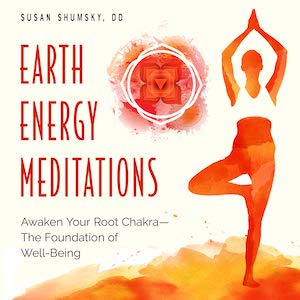
Wise Earth Medicine Tarot, by Lalania Simone
Weiser Books,1578638631, 96 pages, 78 cards, May 2025
Wise Earth Medicine Tarot by Lalania Simone is a beautifully crafted deck that seamlessly blends the traditional elements of tarot with the healing energies of the Earth. Drawing upon the vibrancy and sacred wisdom of 78 animals and plants, this deck shares the perspective of each traditional tarot card through the wisdom of the natural world.This deck offers a unique medicine for the soul, and readers will certainly enjoy the grounding energies that come through in the readings.
“The earth is a generous being and an incredible well of infinite wisdom. This powerful spirit provides for us every day, in every day, delivering the sustenance we need to survive and thrive in our lives.”1

As soon as I opened this deck, I felt the radiance of its primal wisdom coursing through me. The gilded green edges of the card contained an intelligence that goes beyond human intellect: the sage wisdom of the animal and plant kingdoms. Looking through the colorful cards, I saw a crow, bear, bunny, moose, dragonfly, and so many other creatures whose insights I was eager to hear, especially in regard to the wisdom of the tarot which I was already very familiar with.
In the guidebook introduction, Simone provides an overview of the tarot structure, discussing the significance of the major and minor arcana, along with an explanation of court cards. She notes how this deck has corresponding natural elements for each of the traditional tarot suites: Water for Cups, Wind for Swords, Fire for Wands, and Earth for Pentacles. She also offers one suggested spread for readers to use.
For each card, the guidebook lists the corresponding traditional tarot card, key words, a card overview (the content ranges from a description of the card’s symbolism/meaning to a question to reflect on to an important message coming through), and finally a section on the medicine the animal or plant featured on the card offers to the reader. The passages are short, but there’s enough guidance packed in to gain meaningful insight. My favorite section is “The Medicine”, as this is where the deck really stands out for its unique perspective on the tarot and integrates nature’s wisdom.

All the cards are filled with flowers, plants, and the moon, in addition to the main animal or plant representing the card’s energy. Plus, three keywords are shared at the bottom of the card to give it meaning. The textured background gives the cards visual dimension, making the images appear lively and in motion. There’s lots of little details that capture the essence of nature’s beauty, from the texture of the wolf’s fur to the delicate features of the hummingbird’s wing. The cards are active and alive, inviting readers to be in direct communion with the life force within the deck.
There is shamanic wisdom held within in this deck. While one can definitely use it for divination, I am mostly enjoying it for self-discovery and personal growth. I love tapping into the energy of nature and discovering the wisdom of Earth’s marvelous creations when working with the deck. Each card is a pathway to a greater understanding of nature, serving as a tool to strengthen the reader’s bond to the strength and beauty of the Earth.
One thing I will note is that I’ve noticed my mind doesn’t automatically translate these cards to the traditional Rider-Waite-Smith corresponding tarot because of the animal or plant presence. Since most tarot decks still use human depictions, especially for the court cards and major arcana, it’s easy to make the connection to the card’s meaning. But the presence of animals and plants in this deck gets my mind wandering some place else entirely, and I end up finding new intuitive messages coming through beyond the traditional tarot meanings. I really enjoy the non-anthropomorphic focus of this deck!

I’ve been working with this deck daily and have gotten very resonant messages. One of my favorite pulls so far was when I asked if I should continue to push through and finish an astrological certification program that I’ve been working towards completing over the past year. I’m at the point where I’m just about finished but starting to wonder if I will ever really be done and ready to submit my final project. The card I pulled was Wise Earth, which corresponds to The World card in traditional tarot.
The keywords on the card are “completion•integration•wholeness”2. I instantly felt relieved that the card indicated I would get this project finished and bring it to completion! My happiness only grew once I read the guidebook message:
“Something in your life has reached a meaningful completion, or soon will. It is time to harvest the fruits of your labor. Celebrate this moment in your journey, for as one cycle ends, another begins.”3
Ahhh, just what I needed to hear to give me the motivation to make the final push to submit my work!
Another card I pulled earlier in the week was 2 of Fire, featuring a camel on the card. I had asked what to focus on that day, and this was the camel’s message for me in The Medicine section of the guidebook:

“It is time to take stock of your present circumstances and plan for the next phase of your life. The camel looks ahead and is prepared for the long journey. Its message is to set yourself up for success in any way you can.”4
I loved this message! And throughout the rest of the day, whenever I found myself procrastinating, I thought of the camel’s energy, encouraging me to do what needs to get done today for a better tomorrow.
Overall, Wise Earth Medicine Tarot is the perfect deck for those who seek the wisdom of the natural world, in particular the guidance of animal and plant spirits. Simone has truly integrated the tarot with messages from nature’s allies, providing a new perspective on traditional tarot messages. The beautiful artwork, featuring an animal or plant on every card, makes for some unique spreads. Tarot enthusiasts and nature lovers alike will enjoy working with this deck for personal reflection, meditation, or divination, as it provides an enriching experience that is both grounding and enlightening.
Alanna Kali is an astrologer, numerologist, and pioneer spirit that loves to explore life through the lens of depth psychology. She has a passion for studying the humanities and social trends. Her academic work is centered upon reuniting body, mind, and spirit through eco-psychology. She loves reading, spending time in nature, and travel.







